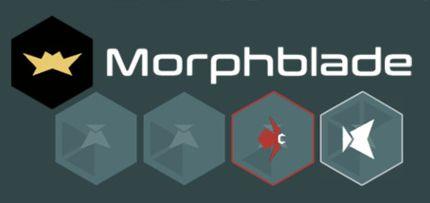Save a massive 30% off the listed price when paying with cryptocurrency Cardano.
Discounts are applied to price at checkout!
Set currency to ADA| Minimum Requirements | |
|---|---|
| OS: | Windows XP or later |
| Processor: | 2GHz to be safe |
| Memory: | 4 GB RAM |
| Graphics: | 64MB DirectX 9 compatible card |
Morphblade is an endless, very simple puzzle game played on a hex grid. You change into a shape corresponding with the tile you move onto, and your goal is to survive for as long as possible against endlessly spawning enemies. It is a turn-based game, and you can level up the tiles you are on as well as add to the size of the hex grid.
Mechanically, the game is extraordinarily simple. There are six tile types in the game –hammer (shoot things in adjacent cells), arrow (jump 2 tiles forward, killing everything in your way – but if you only move one tile, you push them instead), blade (kill everything on either side of your line of attack), acid (strips armor from an enemy which moves onto it – armored enemies are otherwise invincible), repair (repairs you when you move onto it), and teleport (you can teleport to any point on the board from this hex).
Cells that can kill enemies gain one experience every time you kill an enemy from them. Cells that cannot kill enemies gain one experience every time an enemy dies on it. When a cell gains six experience, it levels, and allows you to choose a level benefit based on any hex adjacent to that tile. Acid cells can be made to kill enemies which are stripped by them if they choose the hammer benefit, for instance, or can repair you whenever an enemy moves onto them if the repair benefit is chosen. This adds more variety to the gameplay, and is really core to making it more than extremely simple (though it is still quite simple).
There are a handful of enemy types. All of them are called “bugs”, which move one hex towards you every turn (after spending one turn growing into adult forms), but they have various abilities – some just attack you if you’re next to them. Some can move two tiles at once. Some push you instead of hurting you. Some can attack from range in a straight line. Some are armored, being invincible until being stripped by an acid cell. And some are explosive – they destroy the cell they die on. These can all be mixed, so you can run into a flying, explosive, armored, pushing bug, for instance.
The longer the game goes on, the more (and more complicated) bugs spawn in each wave. If you get hit once, you turn red; if you get hit twice, you die. Between waves, you can move around freely, so it is easy to heal yourself up between waves; in waves, every move is at a premium, and if multiple bugs hit you on the same turn, you take damage for each. It is possible to gain one bonus hit point if you upgrade repair tiles with other repair tiles, giving you a maximum of three hit points, and as every wave ends you get to add another tile of a random type off a side of the grid of your choice (you can see which tile would be added in which spot, adding some strategy to the game). Sometimes you will also be able to add wild card tiles – blank tiles that you get to choose the type of.
So far, so simple. So, what’s the rub?
The problem is that this game is not only extremely simple, it is too simple. It just feels kind of pointless to play, like a throwaway mobile game or flash game, and after spending about 20 minutes or so with the game, you’ll understand how it works and there’s really nothing more after that. It is an endless game but in the end it is a rather boring one; there’s no goal, no greater purpose, no achievements, nothing to aim or strive for. It isn’t hard to get to wave 20+, and by that point, you will likely have fallen into a repetitive pattern which frankly just isn’t all that fun to do over and over again.
In the end, I got bored with this game within an hour of picking it up, and see no real reason to ever play it again.

| Title: | Morphblade |
| Genre: | Casual, Indie |
| Released: | 3 March 2017 |
| Developer: | Suspicious Developments |
| Publisher: | Suspicious Developments |
| UI | Audio | Subs | |
|---|---|---|---|
| English |

Great games at unbeatable prices, the best deals on PC, Mac and Linux games.
Get email updates of our latest deals from once a month to instantly.




Save a massive 30% off the listed price when paying with cryptocurrency Cardano.
Discounts are applied to price at checkout!
Set currency to ADA
